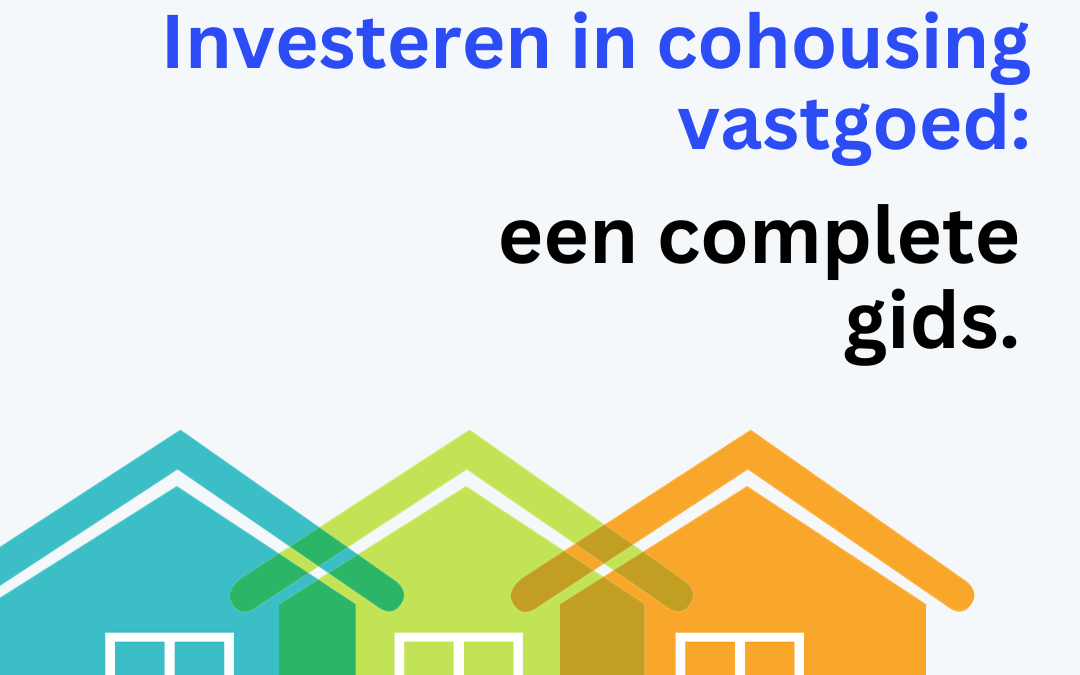When it comes to property investment, a common mantra is "location, location, location". This age-old wisdom remains relevant even in the modern context of cohousing. This article explores the crucial role of location and market insights when investing in cohousing, supported by concrete examples and accompanying paragraphs.
Understanding cohousing
Cohousing is a collaborative form of living that combines the privacy of individual homes with the benefits of communal facilities. These communities are often designed to promote social interaction and sustainable living. Site selection plays a fundamental role in the success of such projects.
The impact of location on cohousing
Accessibility and facilities
A well-located cohousing project offers access to essential amenities such as shops, schools, healthcare and public transport. These factors not only attract potential residents, but also increase the value and attractiveness of the project.
Concrete example:
Take the cohousing project 'De Zonnige Wijk' in Ghent, Belgium. Located within cycling distance of the city centre and near several public transport hubs, this project offers its residents both the proximity of urban amenities and the tranquillity of an established residential neighbourhood.
Market insights: the key to successful investments
Demographic trends
A deep understanding of an area's demographic composition and trends can help investors determine whether there will be demand for cohousing. For example, areas with a younger, environmentally conscious population may show higher demand for cohousing.
Concrete example:
Antwerp has seen a significant increase in young professionals and families seeking sustainable and community-oriented housing solutions. A cohousing project in this area would likely have a high occupancy rate, given its alignment with demographic needs.
Economic factors and property market
The success of cohousing investments is closely linked to the economic health of the region and the dynamism of the local real estate market. A booming economy and a robust property market create fertile ground for cohousing projects.
Concrete example:
The Leuven region is known for its innovative companies and educational institutions, ensuring a constant influx of young professionals and academics. This has led to a strong real estate market with growing demand for flexible housing solutions such as cohousing.
The role of urban planning and regulation
City planning policies and regulations can make or break a cohousing project. Investors should be familiar with local laws, development plans and possible subsidies that could affect the feasibility of their project.
Concrete example:
In Brussels, the local government has introduced subsidies and tax incentives for sustainable development projects, including cohousing. This policy has stimulated the development of several successful cohousing projects in the region.
The relevance of socio-cultural factors
The socio-cultural dynamics of a location cannot be overlooked. Areas with a strong sense of community and openness to alternative housing are often more suitable for cohousing.
Concrete example:
The city of Mechelen has a rich history of community projects and cultural inclusiveness. This background has facilitated the acceptance of cohousing in the region, contributing to the sustainability of such investments.
The importance of ongoing market analysis
Market insights are not static; they are constantly evolving. Regular analysis and monitoring of market trends are crucial to the long-term success of cohousing investments.
Concrete example:
In Antwerp, the recent shift towards teleworking has led to increased interest in cohousing outside the city centre. Investors who recognised this trend early were able to take advantage of the growing demand for cohousing in the peripheral municipalities.
Immotokens: your partner in cohousing investments
Immotokens specialises in advising and supporting investors in navigating the complex world of real estate investment, including cohousing. With our expertise in site analysis, market insights and property management, we are the ideal partner for your next cohousing project.
Our services:
- Detailed location and market analyses
- Selection of promising cohousing projects
- Legal and financial advice
- Investment management and optimisation
By working with Immotokens, you can rely on our expertise and dedication to optimise your cohousing investments. Contact us today to discuss your options.
Conclusion
Location and market insights are indispensable when investing in cohousing. A thorough analysis of these factors can mean the difference between a successful investment and a missed opportunity. With Immotokens on your side, you are assured of expert advice and guidance to get the maximum return from your cohousing investments.



